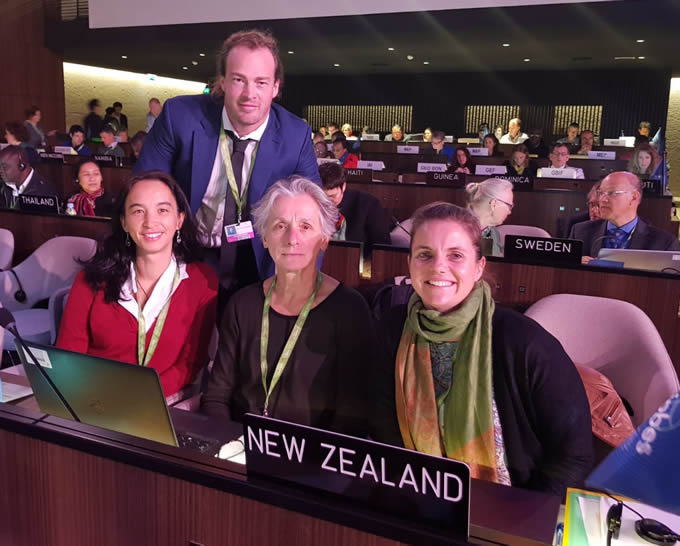One Million Extinctions – who’s counting?
The plight of global biodiversity made headline news around the world – and in New Zealand – when the United Nations Intergovernmental Platform on Biodiversity and Ecosystems Services (IPBES) met in Paris in April 2019. Anne-Gaelle Ausseil from Manaaki Whenua was in the official New Zealand delegation and reflects here on nature’s week in the international spotlight.
Amidst a hectic international news agenda – climate change, the burning Notre Dame, terrorism and social media – there was still space for biodiversity on the front pages as the plight of a million species hangs in the balance, and the impacts of these losses are realised.

This historic event marked a major shift in perception of nature’s decline and urgency to act, in conjunction with climate change efforts. It had an electroshock effect over the globe with thousands of Tweets a day (#IPBES7 even out-trended #GameofThrones on French Twitter on the first day!), massive TV coverage and celebrity outcry (Leonardo DiCaprio, Al Gore, Marion Cotillard, David Attenborough, Jane Goodall to name a few). It is comparable to the first IPCC meeting that made the major breakthrough for climate change actions.
The plenary is the culmination of many years of analysis and domain level reporting, building on previous assessments. In preparation for this final report the New Zealand delegation sent about 130 comments and were praised by IPBES experts for being constructive throughout the process.
How does IPBES affect New Zealand?
Seeing the impact and benefits of this work for New Zealand doubles the value of the investment in time and energy. The structure of the latest Environment Aotearoa report follows the drivers listed in IPBES. This puts New Zealand in a good position for benchmarking with the Asia-Pacific region and the world; including better reporting to international bodies and the ability to improve target setting for policy makers – which is particularly relevant as we assess our progress towards the Sustainable Development Goals. This connection with IPBES also supports the alignment of research, data and methodologies underpinning reporting for New Zealand and internationally.
So, what does the future hold?
Now that the report has been approved by the 132 member countries, the information cannot be denied by participating governments. Key messages can now be used further up the decision-making chain to induce transformative changes in each country, or initiate conversation for transboundary agreements.
It does not stop here: the next IPBES work programme will focus on biodiversity, food, water and health. A technical paper on interlinkages between biodiversity and climate from IPBES/IPCC is also in the pipeline. The work programme will inform the post-2020 framework and align with the 2030 SDG framework.
